I have a SQL View that joins a few different tables, and in some cases alters the returned column [EDIT, not names] values. The application that uses this dataset needs to occasionally update one or more columns in the views underlying tables. I have a simple fictitious sample to illustrate this….
Table: Lead
- Columns: Id, Date, CustId, SalesId
Table: Person
- Columns: Id, First, Last, email
Table: Address
- Columns: Id, Line1, Line2, City, State, Zip
Then a view something like this…
Create view uvw_LeadActivity
As
Select
L.Id as ‘LeadId’,
C.Id as ‘CustomerId’,
C.Last as ‘Customer.LastName’,
C.First as ’Customer.FirstName’,
C.email as ’Customer.Email’,
A.Id as ‘AddressId’,
A.Line1 as ‘Address1’,
A.Line2 as ‘Address2’,
A.City,
A.State,
A.Zip,
S.Id as ‘SalesId’,
S.Last as ‘Sales.LastName’,
S.First as Sales.FirstName’,
S.email as Sales.Email’,
L.Date
From
Lead L
Inner join Person C on C.Id = L.CustId
Inner join Person S on S.Id = L.SalesId
In the application I have the view column name, the value, and an indicator if the value was altered. I'd like to send up the view column name and the value that has changed. So if the user updated the Customer.Email column, I need to be able to figure out that table and column the view column came from to update it.
I feel like I am close, but I am missing something, I hope simple. I have this SQL statement I was using to try and get the table and column that the view is mapped to...
SELECT
v.object_Id VIEW_ID,
v.name AS VIEW_NAME,
t.object_id AS TABLE_ID,
t.name AS TABLE_NAME,
c.name AS COLUMN_NAME,
c.column_id AS COLUMN_ID
FROM
sys.views v
JOIN sys.sql_dependencies d ON d.object_id = v.object_id
JOIN sys.objects t ON t.object_id = d.referenced_major_id
JOIN sys.columns c ON c.object_id = d.referenced_major_id AND c.column_id = d.referenced_minor_id
WHERE
v.name='[VIEWNAME]'
My results look something like this (condensed):
VIEW_ID VIEW_NAME TABLE_ID TABLE_NAME COLUMN_NAME COLUMN_ID
1703311661 uvw_LeadActivity 199671759 Lead Id 1
1703311661 uvw_LeadActivity 199671760 Person Id 1
1703311661 uvw_LeadActivity 199671760 Person Last 2
1703311661 uvw_LeadActivity 199671760 Person First 3
I really want it too look something like this (condensed):
VIEW_ID VIEW_NAME VIEW_COLUMN TABLE_ID TABLE_NAME COLUMN_NAME COLUMN_ID
1703311661 uvw_LeadActivity LeadId 199671759 Lead Id 1
1703311661 uvw_LeadActivity Customer.Id 199671760 Person Id 1
1703311661 uvw_LeadActivity Customer.LastName 199671760 Person Last 2
1703311661 uvw_LeadActivity Customer.FirstName 199671760 Person First 3
Truth is I don't really need the whole result (query) just need to be able to get (using this example) the table and column for Customer.Email. With that I can write the needed SQL to update. I can't hard code this logic because the SQL DBA will over time update the view as need by the business.
I hope this question is clear. Thanks in advance!
UPDATE: My hope is it be able to take in either a single column and updated value, or multiple column/values pairs into a stored procedure and update the based tables from that input. Here is general outline...
create proc usp_UpdateData
@EntityId int,
@columnName varchar(max),
@newVaule varchar(max)
as
Declare @baseTableName varchar(max)
Declare @baseColumnName varchar(max)
Declare @sqlCmd varchar(max)
DECLARE @ParmDefinition varchar(max);
Select @baseTableName=[Table], @baseColumnName=[Column] from [MAGICQUERY]
SET @ParmDefinition = N'@Table varchar(max), @Column varchar(max), @Value varchar(max) @Id int';
SET @sqlCmd = N'Update @Table Set @Column = @Value Where Id = @Id';
EXECUTE sp_executesql @sqlCmd, @ParmDefinition, @Table = @baseTableName, @Column=@baseColumnName, @Value=@newVaule, @Id=@EntityId;
So the [MAGICQUERY] is what I am try to solve here.

